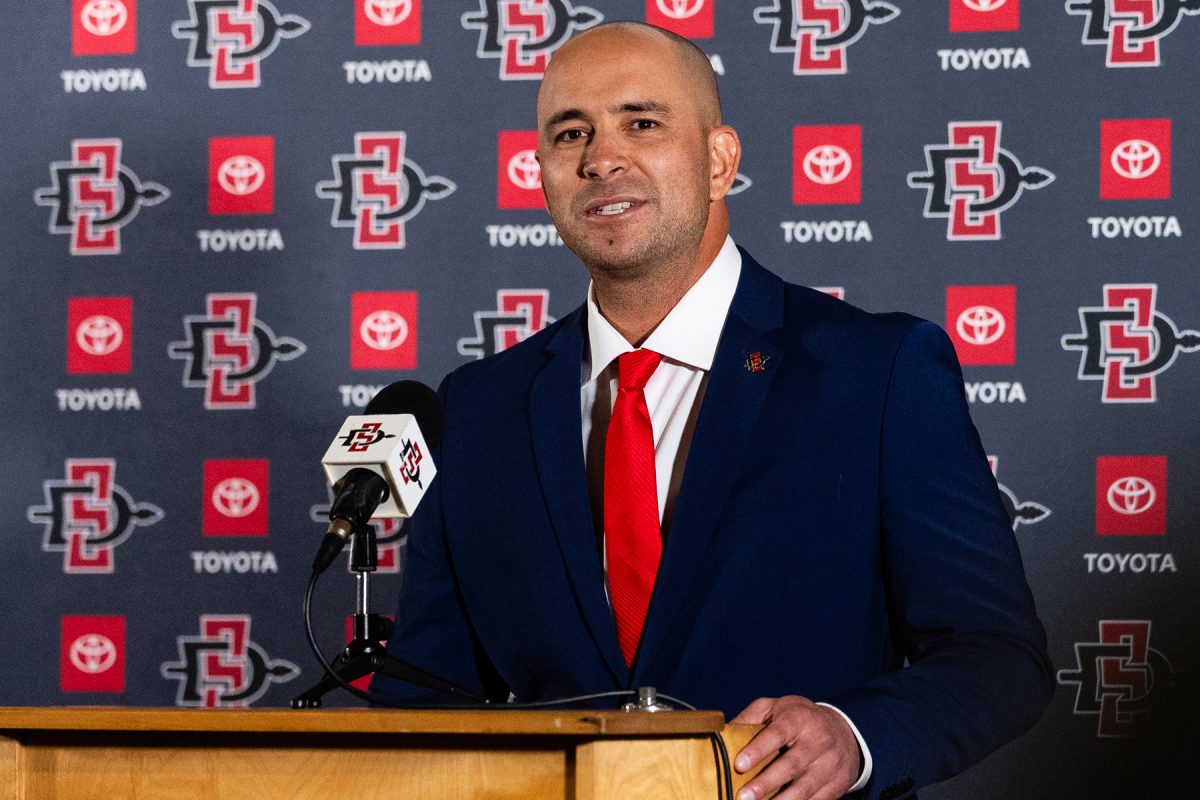Although we are less than two years away from the highly-anticipated election year, any polls predicting or making definite statements about who the Democratic frontrunners will be or even who the nominee will be are meaningless. Debates haven’t even started. It’s simply too early.
This far in advance, polls tell us less about a candidate’s chances and more about name recognition.
However, the polls that do exist have the top three likely contenders as white males. Though the rankings change depending on which poll you’re viewing, the top three remain fairly consistent with Biden, O’Rourke and Sanders (cough, he’s not even a Democrat, cough) as top three.
As a big fan of both Biden and O’Rourke, I have no serious qualms about their potential. In fact, I think they’d be amazing presidents.
But with that being said, I do find it strange that the top three choices according to many major polls are all cisgender, straight, white men.
I mean for Christ’s sakes we just swore in the most diverse Congress in this nation’s history — with so many “firsts,” and not to mention, we have an unprecedented number of people of color, women and young people running in the primary.
With that being said, why are some still so quick to jump right past the qualified, experienced women and women of color and cuddle up to the white guys?
And not because they have a better track record or more legislative accomplishments, but rather because many people are subconsciously uncomfortable with electing anything other than old white men to lead our country.
Or maybe they don’t feel like a woman, especially a woman of color is capable of leading the country.
Even worse, some who claim to be liberal are liberal up until it comes time to reject the status quo, then it’s, “well, I don’t think she could win.”
Let’s take a look at the landscape of the Democratic party, a party in which black people — particularly black women have been the backbone of for decades. Just this past November, more than 90 percent of black women voters voted for Democratic candidates.
More than any other group in the country.
Black women never waiver, we never diverge — we’re loyal members and this makes us a necessary component to the success of the party.
Again, in 2016, more than 90 percent of black women voted for Hillary Clinton.
In 2017, a whopping 98 percent of black women cast their ballots for Senator Doug Jones in Alabama, a deeply conservative state that hadn’t seen a Democratic senator in since 1992.
Black women did that, and we continue to do that.
And aside from our loyalty, we actually do the work.
We organize and discuss strategy in hair shops on Saturday morning and church on Sunday, we knock on doors, we make phone calls and we organize tirelessly.
For this reason, we’re no longer okay with merely being the backbone of a party that we invest so much time, money and energy into.
We’re ready to lead.
Stacey Abrams is a perfect example of this.
Ms. Abrams isn’t the future of the Democratic party like many have suggested, but rather the now.
Since the beginning of her career, she’s created the blueprint for a more equitable and prosperous country and has worked to seriously bring conversations about voter disenfranchisement to the forefront.
Now, the Democratic party isn’t perfect, but we know the Republican party exists to harm us.
And black women are smart enough to look beyond the dog whistles, the pandering and the lies to see that the Republican party works strategically against our interests and ultimately at our expense.
For this reason, we vote like our life depends on it, because…well, it does.
In fact, the interests we vote for end up being the interests that work for the rest of the country. Advancing issues around racial inequality, health care and economic justice don’t just help black women, but they help everyone.
As black feminist hero, Claudia Jones once said, “If black women were free…everyone else would have to be free since our freedom would necessitate the destruction of all the systems of oppression.”
Additionally, the expectation is — whoever wins the Democratic nomination will lead the nation for two terms. Within the span of eight years, our country’s demographic is expected to change drastically. This means, as time evolves, the racial and gender makeup is expected to look less and less like the Bernie Sanders of the world and more like Kamala Harris, Stacey Abrams and Kirsten Gillibrand.
It’s almost insulting to automatically suggest that we should rely on a 77-year-old white man to lead a party (one he doesn’t even claim), so increasingly diverse and a country that has still yet to heal from its racist, sexist legacy.
Now, I say all this to say that I will support whoever the Democratic nominee happens to be. Even if it is Bernie Sanders.
But, I strongly encourage everyone to reach beyond this conversation of “electability” that’s largely only discussed when it concerns candidates that are women or people of color.
We have a number of amazing candidates looking to kick Trump and other Republicans out of office in 2020 and we need to make sure we’re having substantial, quality conversations about their policies and record.
Let’s spend less time focusing on Kamala Harris’ past relationships and favorite rappers, and more on her vision for the future of the country.
Let’s spend less time focusing on regaining the white-working class voters who Democrats haven’t been able to win back for more than 50 years, and more time supporting and empowering the black women who have been loyal to Democrats for decades.
Kemi Giwa is a senior studying public relations and political science. You can follow her on Twitter @_KemiG.









